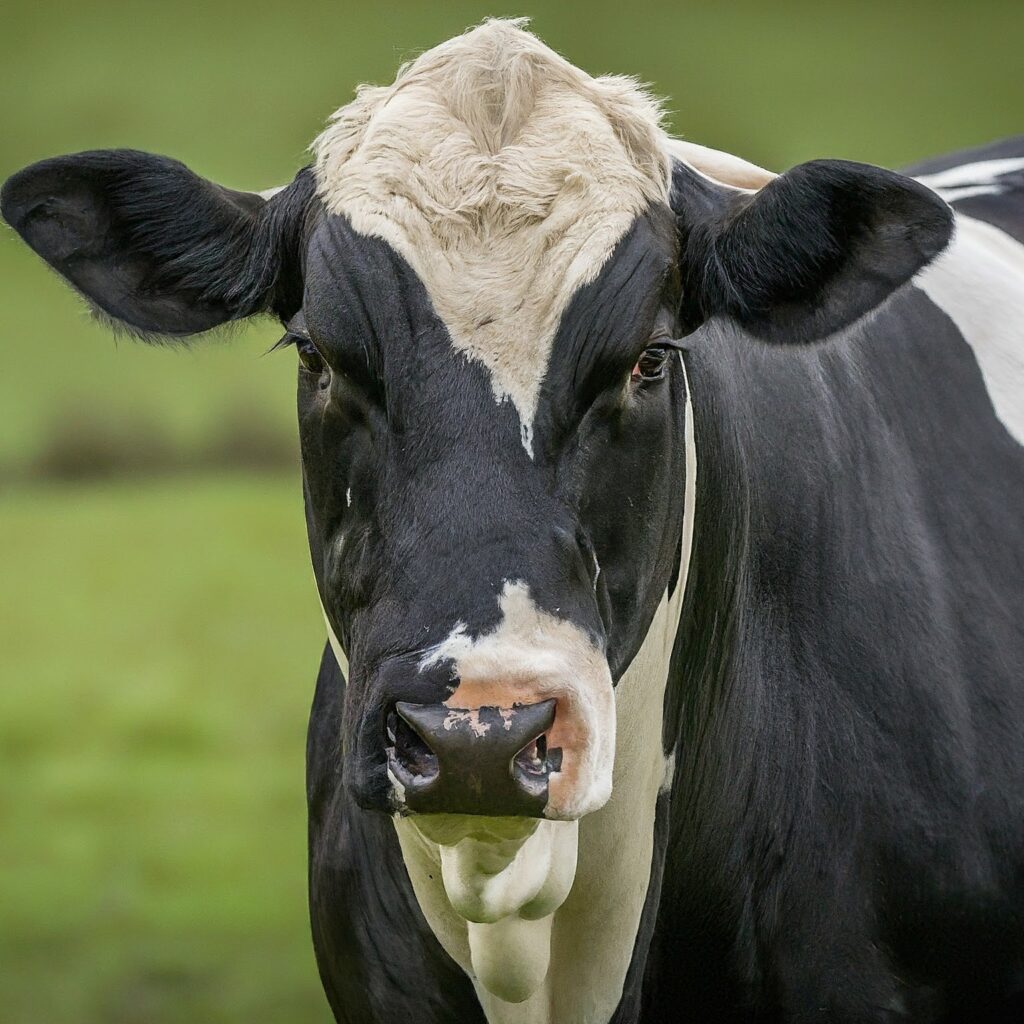
Imagine a dairy cow built to thrive in the heat. One that can produce impressive quantities of milk while grazing lush tropical pastures. Now add in a striking coat pattern and a gentle nature – that’s the Girolando in a nutshell! Developed in Brazil, this unique breed combines hardiness and dairy prowess, making them a star in tropical and subtropical regions worldwide. Let’s dive into what makes the Girolando worth considering for your dairy operation.
Origin
The Girolando story begins in the heart of Brazil. Recognizing the need for a dairy breed that could withstand the country’s hot climate, breeders embarked on a mission. They crossed the heat-tolerant Gir breed (originally from India) with high-producing European dairy breeds, primarily Holsteins. Over decades of careful selection and refinement, the Girolando emerged as a distinct breed.
Girolando Cattle Characteristics
- A Splash of Color: Girolando are known for their eye-catching coat patterns. They can be nearly solid white, spotted with black or red, or even primarily black with white markings.
- Moderately Sized for Efficiency: Girolando are medium to large in size, striking a balance between beef and dairy conformation.
- Built for the Tropics: One of their most notable traits is their inherited heat tolerance and resistance to tropical parasites and diseases.
- Impressive Milk Producers: While their milk production may not be the absolute highest, Girolando cows produce good volumes of milk with a higher butterfat content than pure Holsteins.
Pros of Raising Girolando Cattle
- Tropical Champions: If you’re farming in a hot, humid climate, Girolando cattle are a top contender. They thrive where other specialized dairy breeds might struggle.
- Sustainable Production: Girolando excel on pasture. This lowers input costs and makes them ideal for sustainable dairy operations.
- Milk with a Plus: Their milk’s higher butterfat makes it excellent for cheesemaking and other dairy products.
- Adaptable and Resilient: Girolando cattle have proven adaptable to various environments beyond their Brazilian homeland, doing well in places like Mexico and other tropical regions.
Cons of Raising Girolando Cattle
- Sometimes Less Volume: In temperate climates, Girolando cows may not reach the peak milk production of highly specialized breeds like Holsteins.
- Regional Availability: While their popularity is spreading, finding Girolando breeding stock might be easier in Brazil or countries with similar climates.
Characteristics Table
Let’s make those traits a little clearer with a table:
| Characteristic | Girolando Cattle |
|---|---|
| Average Milk Production | 5,000 – 8,000 kg per lactation |
| Mature Weight (Cows) | 1,100 – 1,300 lbs |
| Mature Weight (Bulls) | 1,800 – 2,200 lbs |
| Butterfat Content | Higher than pure Holsteins |
| Adaptability to Hot Climates | Excellent |
Girolando Cow vs. Girolando Bull
As with most cattle breeds, the main difference between Girolando cows and bulls lies in size. Bulls are substantially larger and more muscular. Bulls, even within docile breeds, always require careful handling due to their sheer size and strength.
FAQ
Let’s address common questions:
- What are Girolando cows in Brazil? They are one of the most popular dairy breeds in Brazil, prized for their heat tolerance and milk production abilities.
- What is the price of a Girolando cow? Prices vary depending on bloodlines, age, and location. It’s best to contact breeders directly for current market values.
- What is the history of Gir cows in Brazil? Gir cattle were first imported to Brazil in the early 20th century, specifically for their ability to withstand the country’s hot climate.
- Where did the Girolando cow come from? The Girolando breed was developed over many years in Brazil through selective breeding.
Conclusion
The Girolando offers a compelling example of how livestock breeds can be adapted for specific environments and needs. If you’re searching for a dairy breed that excels in hot climates and offers sustainable production potential, the Girolando is definitely worth a closer look. Their unique combination of hardiness and good milk production, along with their gentle nature, make them a valuable option for dairy farmers in tropical and subtropical regions.
Have you raised Girolando cattle? Share your experiences in the comments below!
